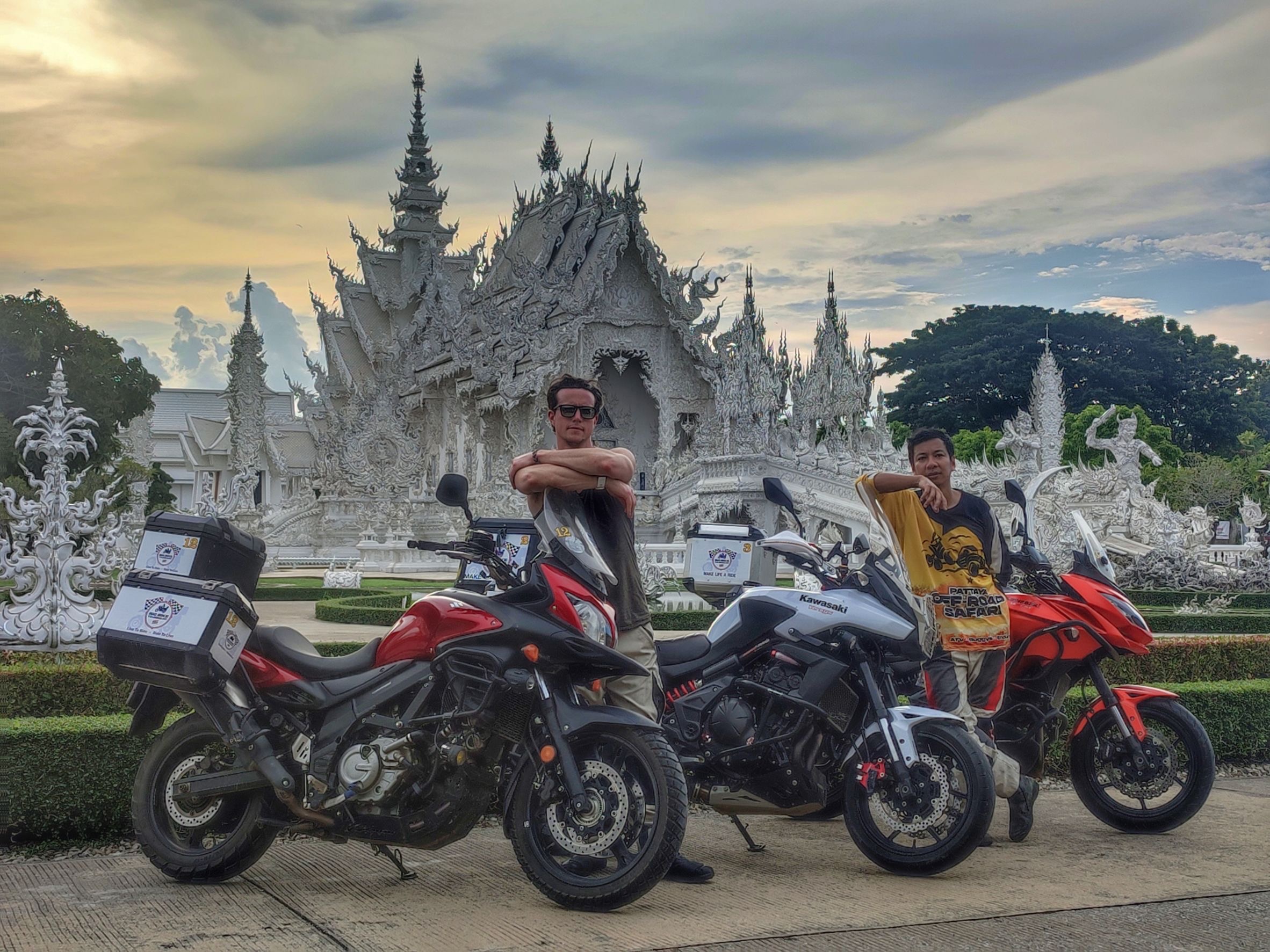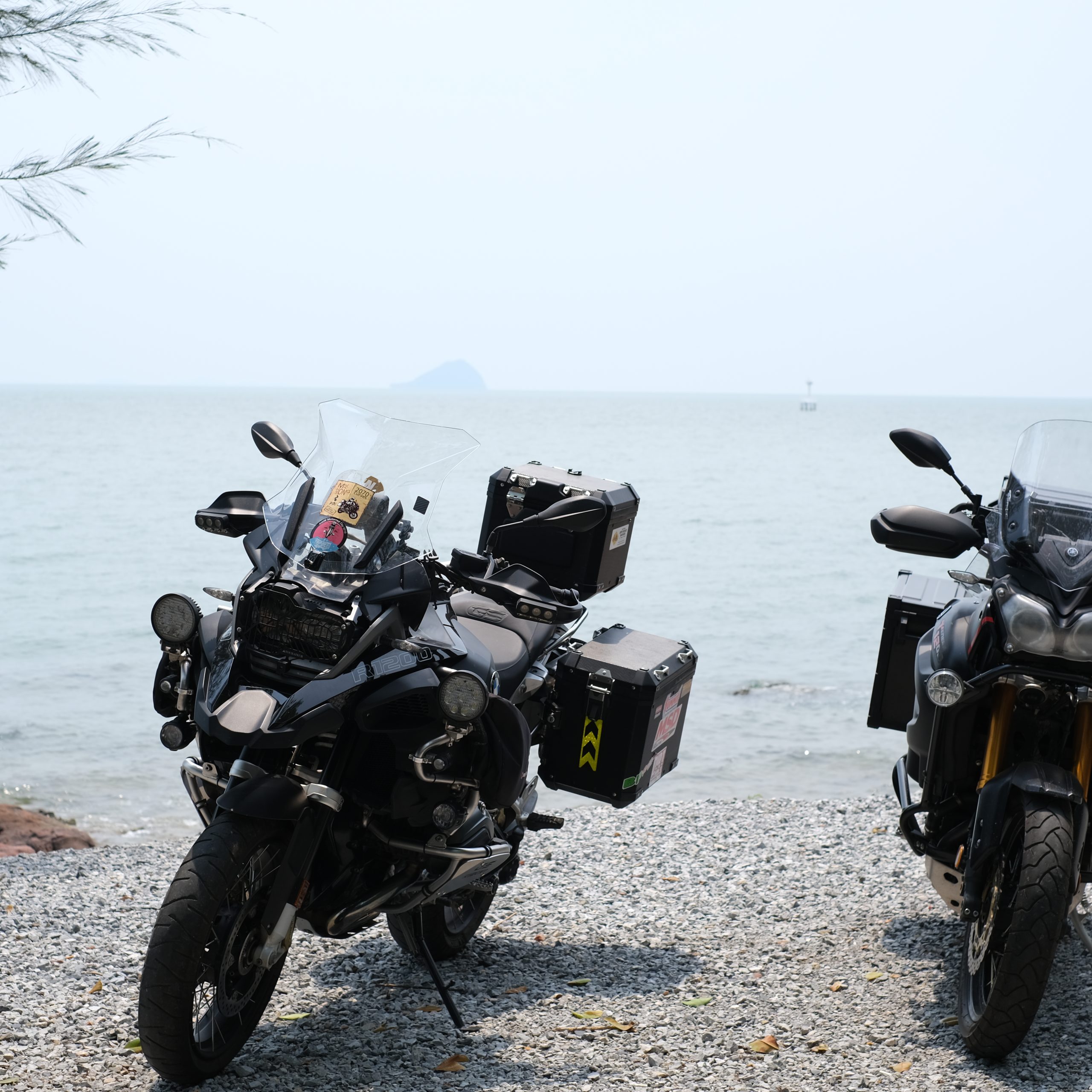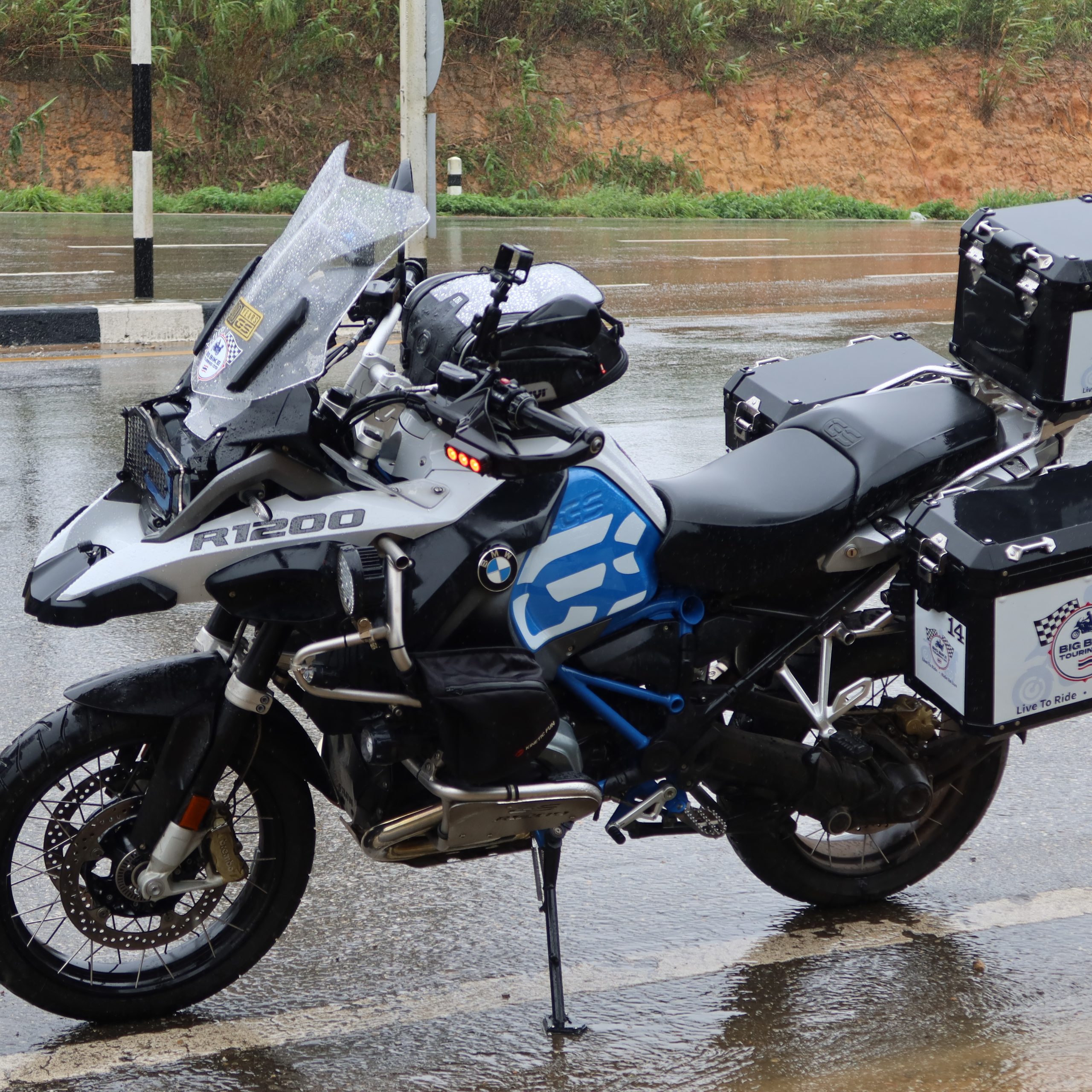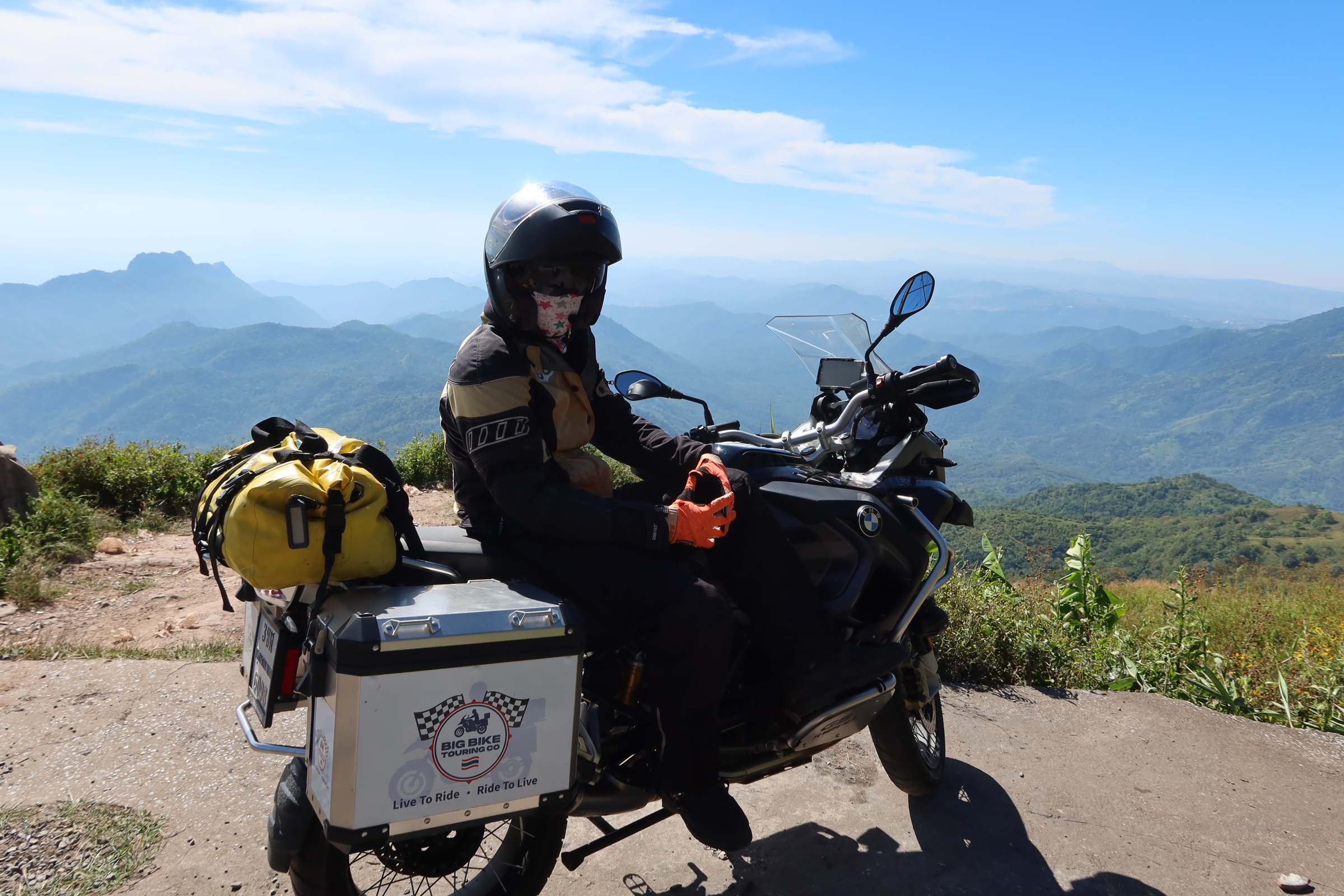Big Bike Touring Co. presents 25 Motorcycle Safety Tips
– Drafted by Sam N’ Dan
Embarking on a thrilling motorcycle journey along the open roads is an unparalleled joy, an experience that comes alive with the hum of the engine and the wind in your hair—until an inattentive driver makes a hazardous mistake. At high speeds, the joyride can swiftly transform into a perilous situation for motorcyclists.
However, ensuring a safe and enjoyable ride is within reach with a few essential precautions. Join us, Big Bike Touring Co., in collaboration with the legal expertise of Sam N’ Dan, as we present 25 Motorcycle Safety Tips. As a premier motorcycle tour operator based in Chiang Mai and Pattaya, and proudly partnered with BMW Motorrad in Thailand, we are dedicated to making your motorcycle adventures not only exhilarating but also secure. Let’s dive into these safety tips to ensure your rides are smooth, safe, and filled with the thrill of the open road
Venturing into the realm of motorcycle riding is an exhilarating experience, but it’s crucial to acknowledge the inherent risks that come with it. Unlike conventional vehicles, a motorcycle leaves your body largely exposed, lacking the protective cocoon of steel, safety restraints, and airbags. Every motorcyclist embraces the inherent risks of their chosen ride, fully aware of the vulnerability that accompanies the thrill.
Yet, embracing this risk doesn’t mean forsaking safety altogether. At Big Bike Touring Co., we recognize the importance of responsible motorcycle riding. Our curated 25 Motorcycle Safety Tips serve as a guide to enhance your safety on the road, providing insights to navigate potentially hazardous situations. These tips not only safeguard your bike from irreparable damage but, more importantly, protect you from the potential of severe or fatal injuries. Implementing these safety measures will not only refine your on-road experience but also cultivate a profound respect for the skills integral to responsible motorcycle riding.
Let’s delve into these tips to ensure that your motorcycle journey is both thrilling and secure.
1. Select the right bike
One of the earliest decisions in your motorcycle journey can significantly impact your future safety. Choosing the right bike is a key safety precaution. Your bike should be appropriately sized for your height and weight, and the engine should suit your skill level. Consider buying a bike with innovative safety features such as:
- Electronic tire pressure monitoring
- Adaptive headlights and LED lighting
- Anti-lock braking
- Automatic clutch and shift
- Drag-torque slip control
- Stability and traction control
2. Know your bike
You should be familiar with your motorcycle’s current condition and any quirks your bike may have. Each motorcycle is unique, so if you have recently purchased a new bike, you should invest time in familiarizing yourself with it. Get to know how it rides and how it handles turns. Ride it enough on easy roads to learn where all the buttons and switches are so you aren’t left fishing for them at high speeds.
3. Check and recheck the weather
The weather can play an integral factor in the safety and enjoyability of your motorcycle outing. Whether you are taking a relaxed backcountry ride on a lazy Sunday afternoon or a cross-country trip, the weather is a crucial aspect of your ride. Ice, snow, and rain can compromise your riding safety due to lowered traction and visibility.
4. Don’t forget the pre-ride
A thorough pre-ride inspection can certainly save you the hassle of a breakdown, and it could save your life. Before heading out, give your bike a comprehensive examination to ensure everything is working correctly. If something isn’t right, fix it or delay your outing until you can.
5. Ride defensively
Always follow the rules of the road and never give other drivers the benefit of the doubt. Instead, assume other drivers are distracted, poor drivers and that they cannot see you. You should also implement the Search, Evaluate, Execute Strategy:
- Search for factors that could increase your risk
- Evaluate potential problems that may arise from these factors
- Execute maneuvers to prevent the hazardous interaction
- Use reflective decals on your clothing and motorcycle
- Check that your headlight is working
- Flash your brake light when stopping or slowing
7. Wear a full-face helmet
A full-face helmet is one of your most important safety devices when riding a motorcycle. Helmets marked with the DOT label have passed the United States Department of Transportation standards.
A full-face helmet provides complete coverage for your face, head, and jaw. When choosing a helmet, it’s essential to select the correct size.
8. Know your escape route
Always know where you can veer off if another driver acts erratically. You never know when someone may make a poor decision. They could pull out, fail to see you, or stop suddenly, causing you to crash if you are caught unaware. You should already know where you can escape if this occurs.
9. Dress for the ride and a crash — ATGATT
You should accept that a crash is possible whenever you jump on your motorcycle. Make sure you always have protective gear — every single time you ride.
ATGATT: All the gear, all the time.
Full safety clothing includes:
- Helmet
- Leathers
- Boots
- Gloves
These pieces should be strong enough to help you avoid severe road rash and other injuries associated with motorcycle accidents.
10. Corner within your skill limits
When you need to corner, keep it within your skill limits and your motorcycle’s limits. Cornering too aggressively is a major contributor to bike accidents.
When cornering, it is easy to oversteer by:
- Lifting off the throttle or braking mid-corner.
- Accelerating into the corner too aggressively or too early
- Entering the corner too quickly
- Braking into the corner

11. Ride with your head on a swivel
“Keep your head on a swivel” is safety advice bikers hear regularly. It means you must constantly be on the lookout for potential threats to your safety. You may be an excellent driver, but there is no guarantee that everyone else on the road is as well. Being hyperaware of your surroundings can protect you from potential hazards.
You should maintain awareness of other vehicles, cyclists, pedestrians, animals, and other objects that could interfere with your route. Be aware of where you could evade these hazards if they were to interfere with your passage.
12. Stay left or right in slowing traffic
Sometimes traffic can suddenly begin to slow. When this happens, keeping your motorcycle to the left or right of the vehicle in front of you is best. This maneuver can help keep an escape route open if needed. It also offers some protection if a driver rear-ends the car behind you. You should be far enough to either side to prevent getting crushed between the car behind you and the one in front of you.
If traffic stops, be ready to go if danger strikes. Keep your eyes on the mirror scanning for trouble, your bike in gear, and your clutch depressed.
13. Let larger vehicles run interference in intersections
When you’re about to negotiate an intersection and a large pickup truck is making the same turn, you can use them as a shield and turn with them. If a negligent driver blows through their red light, they’ll hit the pickup truck rather than you. While you may still take some collateral damage, depending on how fast the reckless driver was traveling, it is preferable to being t-boned directly.
If you can’t use another vehicle as a shield, wait once your light turns green. Ensure all vehicles traveling on the crossroad obey their red light before making your turn.
14. Don’t watch the car; watch the wheels for movement
Not every driver on today’s roads is alert. Unfortunately, some drivers may not even have a decent view of you, and they may be unaware of your existence. When riding a motorcycle, though you can increase your visibility by wearing reflective gear and wearing headlights, even that may not be to make your presence known.
Instead of watching the car to anticipate its next move, watch its wheels for movement. The wheels often hint at the driver’s next move just before the driver initiates it. If you see the wheels begin to angle, the vehicle may be about to change lanes. This quick warning can mean the difference between a pleasant ride and an accident.
15. Don’t watch the car; watch the driver for what they are going to do
Unfortunately for alert drivers, a vehicle gives little away regarding its driver’s intent. The car, as a whole, will not provide many clues about the driver’s next move. However, by watching the driver, you may be able to predict their movement. If a driver begins checking the right-hand mirror, they may be about to merge to the right or make a right-hand turn. This information may help you to avoid a motorcycle accident.
16. Practice evasive maneuvers regularly
You may hope you will never need to employ an evasive maneuver to avoid physical injury. However, if you are ever in a dire situation, it is vital that you know how to evade harm safely.
You can enroll in a defensive driving motorcycle course or practice evasive maneuvers. Moves to try include:
- Emergency motorcycle stop
- Emergency motorcycle swerve
- Emergency motorcycle straighten and stop
- Slow speed turns
- Slow speed U-turns
- Cornering
- Crossing over obstacles
Learning how to enact these techniques will make you more likely to use them during your time of need. Practicing these will also inform you how your bike will react during these procedures.
17. Checklist before riding — T-CLOCS
Before you ride your bike, you should be vigilant about your safety checklist. The T-CLOCS inspection is based around an acronym to help motorcycle riders remember what to check.
T-CLOCS stands for:
- Tires and wheels
- Controls
- Lights and electrics
- Oil and other fluid
- Chassis
- Stands
Run through your checklist before every ride, and it will help ensure no maintenance issues go unnoticed. If you find something off during your T-CLOCS check, fix it before your ride if possible. Otherwise, postpone your outing until someone else can resolve the issue.
18. Headlight on, day and night
Much of motorcycle driving safety relates to visibility. When other drivers can see you, they are much less likely to move their vehicle in a manner that could cause you harm. It makes sense to keep your headlight on during the evening, just like a car. However, you may not be aware that your headlight can also help protect you during the day.
Depending on where you are, there may be state
laws regarding daytime headlight use. But even if your state does not require you to use your motorcycle headlight during the day, there are additional reasons to do so. Your headlight can make you more visible to others under the following conditions:
- Traveling in reduced visibility due to poor weather conditions, such as fog
- Riding on winding roads
- Traveling through construction zones
- Driving through a narrow mountain pass
Keeping your lights on can give other drivers a better chance of seeing you.
19. Train your eyes to detect possible road hazards
Motorcycle safety requires practice and repetition before it becomes second nature. It is possible to train your eyes to detect potential hazards while driving.
Some of the top hazards that you can train yourself to watch out for include:
- Uneven road surfaces
- Blind spots
- Oil, debris, sand, gravel, and slick surfaces
- Side roads
- Intersections
- Dogs, animals, and young children
By picking up on these potential hazards, you can avoid them easier and with increased safety.
20. Be wary of metal objects such as railroad tracks or grates
Obstacles such as sewer grates, potholes, and railroad tracks can be dangerous. These surfaces get slippery when wet. Slipping tires can cause you to lose control of your motorcycle.
When crossing a railroad track on your motorcycle, it is best to cross it at a 90-degree angle to prevent your tires from sliding.

21. Never change gears in a curve
In an ideal world, you should always shift gears before you enter a turn. If you see an upcoming curve, consider whether you should change gears before you begin the turn, for optimal safety.
However, sometimes emergencies happen.
If you need to shift gears mid-curve, you should attempt to do so as smoothly as possible while matching your engine speed. Be aware that a quick change in power to your back wheel could cause you to skid. A skid during a turn can be dangerous and could send you and your motorcycle into the wrong lane or off the road.
22. Manage your risk by managing your speed
If you have been monitoring your surroundings for potential risks, you should reduce your speed when a hazard appears. If you see an oil slick that you can’t avoid, reduce your speed.
You can also reduce your speed to create a crash avoidance space in front of your bike. The size of the space is up to you and your reaction time. For safety, give yourself more room than you think is necessary to allow yourself more time to react to unexpected hazards.
23. Ride at 70 percent of your skill level
One of the best precautions you can take is accurately assessing your motorcycle skill level and consistently driving approximately 30 percent below it. Driving cautiously allows you a small margin of error and leaves room for surprises, such as the car in front of you suddenly breaking.
Motorcyclists who drive at 100 percent of their ability level have little time to react when the unexpected occurs. One of the best ways to be a defensive driver is to regularly take your driving down a few notches and drive your bike at 70 percent of your skill level.
24. Never outride your sightlines
You should never drive so fast that you cannot stop before outriding where you can currently see. There could be something unexpected just out of sight, and if you can’t break fast enough once you see it, the results could be disastrous.
For example, by this logic, you should never:
- Outride your headlight at night
- Take turns too fast, as you have reduced sight lines
- Drive at your normal speed during low visibility
25. Never position yourself between a vehicle and an exit
Sometimes drivers miss an exit. Or sometimes, they nearly miss an exit and swerve sharply across multiple lanes to avoid missing their turn-off. This is dangerous and reckless driving, but that acknowledgment is of little comfort if they crash into you during this foolhardy maneuver. An accident of this sort can have dire consequences for a motorcyclist.
Just as you need to be aware of your own escape route, an alert and defensive motorcyclist should be aware that a vehicle may attempt to reach an exit at the last moment. Leave vehicles room to make this careless maneuver without involving you.


